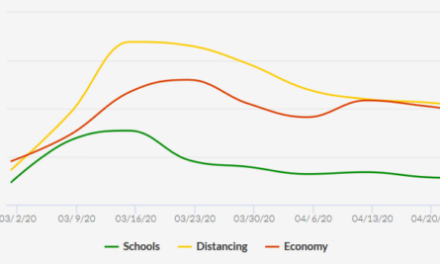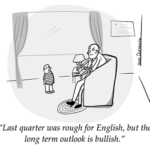There are two problematic approaches to writing about education I see a lot of these days: one I’ll dub “hysteria,” and the other I’ll call “hype.”
The first — much in vogue right now among some national reporters and local outlets — is taking a hyper-negative, super-critical approach in which a new program, idea, company, or person is described to represent a grave danger to public education if not the society at large or is suggested to be on the verge of falling apart. These kinds of stories often focus on stumbles and glitches, overstate possible negative consequences and minimize potential upsides, and gloss over current and past problems that have motivated a risky or uncertain approach. The sky is falling, basically.
Examples that come to mind include some of Politico’s writing about Teach For America and a memorable Washington Post series about the influence of the Gates Foundation in creating the Common Core standards.
The second tendency, which not as strong right now as it used to be but as you’ll see is still frequent enough to represent a regular concern, is towards eager-beaver credulity and excitement, in which reporters and outlets rush to write about new ideas that sound promising but aren’t yet fully baked much less proven. Headlines for these stories often include claims that the new school, program, or idea could be transformative in terms of impact. There may be some hedging included in the piece, and writers always claim they’re not involved in headline and deck writing, but the main thrust of these kinds of stories is that something great is coming, you better get excited.
Remember all the excitement a decade ago about One Laptop Per Child? Remember all the hullabaloo about Columbia University’s The School, or — it has to be said — Green Dot’s effort to help rescue Locke High School in LA?
The recent spate of stories about AltSchool fall solidly into this second category, I fear.
The AltSchool model first showed up on my radar screen in February, with a New Yorker mention. Then came the deluge, including an enthusiastic piece from Wired: Inside the school Mark Zuckerberg thinks will save education and Pacific Standard’s Our Schools All Have a Tragic Flaw; Silicon Valley Thinks It Has the Answer. Even the normally cautious Hechinger Report describes AltSchool as a new model that “could reshape the nation’s classrooms.”
No doubt, AltSchool an interesting model, and news of the $100 million investment that’s being made in the model is worth noting, as is its planned expansion to the East Coast (meaning Brooklyn). The influx of cash — from Facebook’s Mark Zuckerberg among others — adds sex appeal. The notion that AltSchools are a more flexible, student-centered approach to school creates a nice contrast with more structured approaches such as KIPP and Success Academy. It’s got a great name. You get the idea.
And of course the desire to jump in and write about a new idea is understandably irresistible. Everyone’s looking for cool new things to learn about, pitch to editors, and share with others. Who doesn’t want to be first, or close to first, or to write something definitive?
But here as in many other of these kinds of stories, there’s so much we don’t know yet or is being minimized. Though it’s already raised $133 million, AltSchool is only two years old. Just four schools serving only a few hundred kids are participating so far. It’s currently set up as a network of private schools charging tuition, rather than as a charter or in-district model. The software it’s developing is proprietary rather than open source.The student-teacher ratio will cap at 10 students per teacher, according to Tech Crunch. The goal is 20 schools in the next few years, and to reduce the tuition to something close to what’s spent on a public school student (roughly $13,000, though it varies enormously by district and state).
The surge in media fascination hasn’t gone entirely unnoticed. “Mind-boggling that a $29K annual tuition schl getting this attention,” tweeted teacher Larry Ferlazzo. And in reaction to a Tech Crunch article: “Oh,God, give me a break.” Stephen Hurley tweeted: “[CEO] Ventilla is using all the right words, but is he on the right track?”
To be fair, Kevin Carey’s Pacific Standard piece does note that past for-profit ventures into education — Edison Schools and K12 Inc. — have struggled in various ways. “The upside to venture capital is that you get enough money to hire talent and build the infrastructure for potential greatness. The downside is that the ticking clock of return on investment forces you to grow quickly—perhaps too quickly.
And Wired’s Issie Lapowsky notes in her piece that “To be a true success, Ventilla and his team still have to prove that AltSchool is more than just another private school for the tech elite, and that it can actually make a difference in some of the country’s neediest schools. Otherwise, it runs the risk being yet another well-funded, well-meaning startup that set out to solve the problems of the many, but settled on the problems of the few.”
But these caveats and concerns appear deep down in the stories and the tone is quickly flipped back towards optimistic speculation and fledgling successes. Most readers will remember the headline and deck and perhaps the first few sentences of a story, not the end-stage navel-gazing.
This brings to mind a recent New Yorker article that describes the Hype Cycle, which “begins with a Technology Trigger, climbs quickly to a Peak of Inflated Expectations, falls into the Trough of Disillusionment, and, as practical uses are found, gradually ascends to the Plateau of Productivity.” Others who have written about the lure of innovation include the New Yorker’s Jill Lepore and Dana Goldstein (now at the Marshall Project).
Innovators, investors, and the media are all inclined to share the upsides — for a time. A more measured, perhaps even skeptical approach isn’t appealing at this stage. And we need excitement and new ideas and funding to make things better.
But journalists and others are less inclined to track the messy process of implementation (at least until it turns into a potential disaster story). The obvious problem is that, like as not the new idea or school that sounds so cool at first doesn’t end up being so revolutionary, or changes course along the way as a result of learning new things, or is slower to expand than originally envisioned.
General readers don’t know this, or find out much later. And educators and policymakers are constantly exposed to new fads and disappointments, and the result is cynicism and mistrust that benefits no one. There’s got to be a better way to approach innovation stories that honors the potential for change but doesn’t create the impression that success is already in hand. I’m just not sure what it is.
ABOUT THE AUTHOR

Alexander Russo
Alexander Russo is founder and editor of The Grade, an award-winning effort to help improve media coverage of education issues. He’s also a Spencer Education Journalism Fellowship winner and a book author. You can reach him at @alexanderrusso.
Visit their website at: https://the-grade.org/











